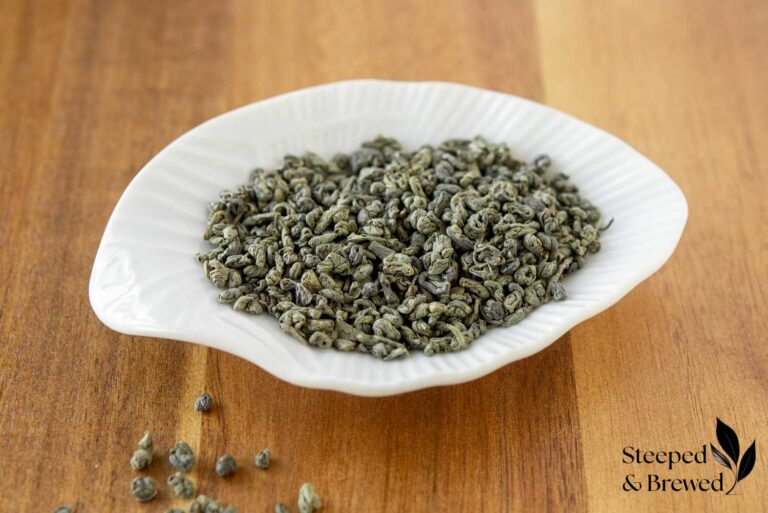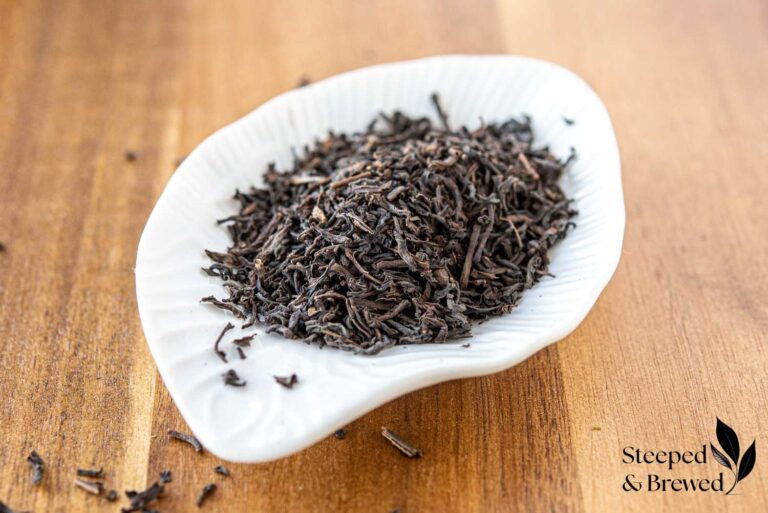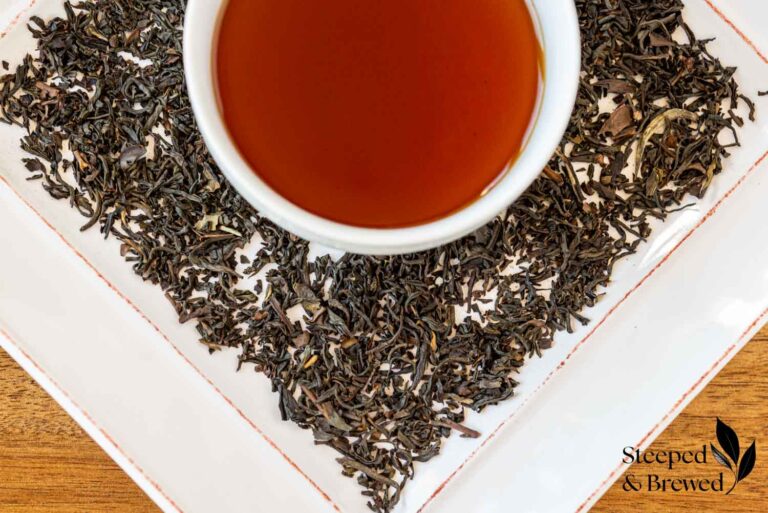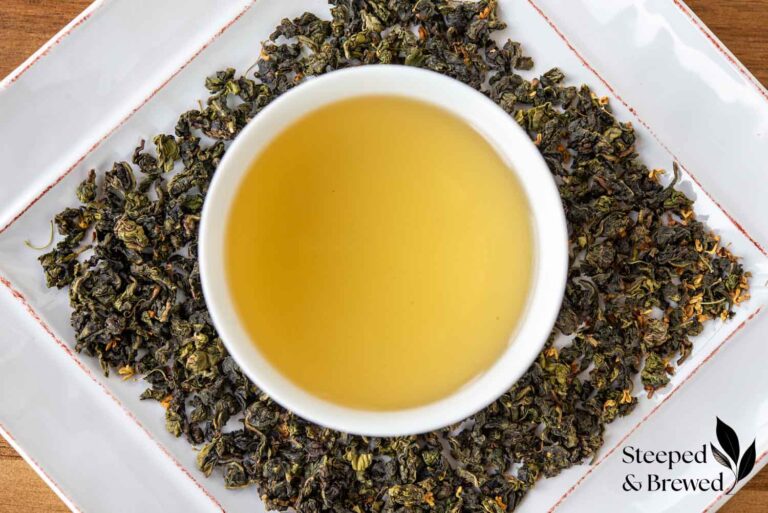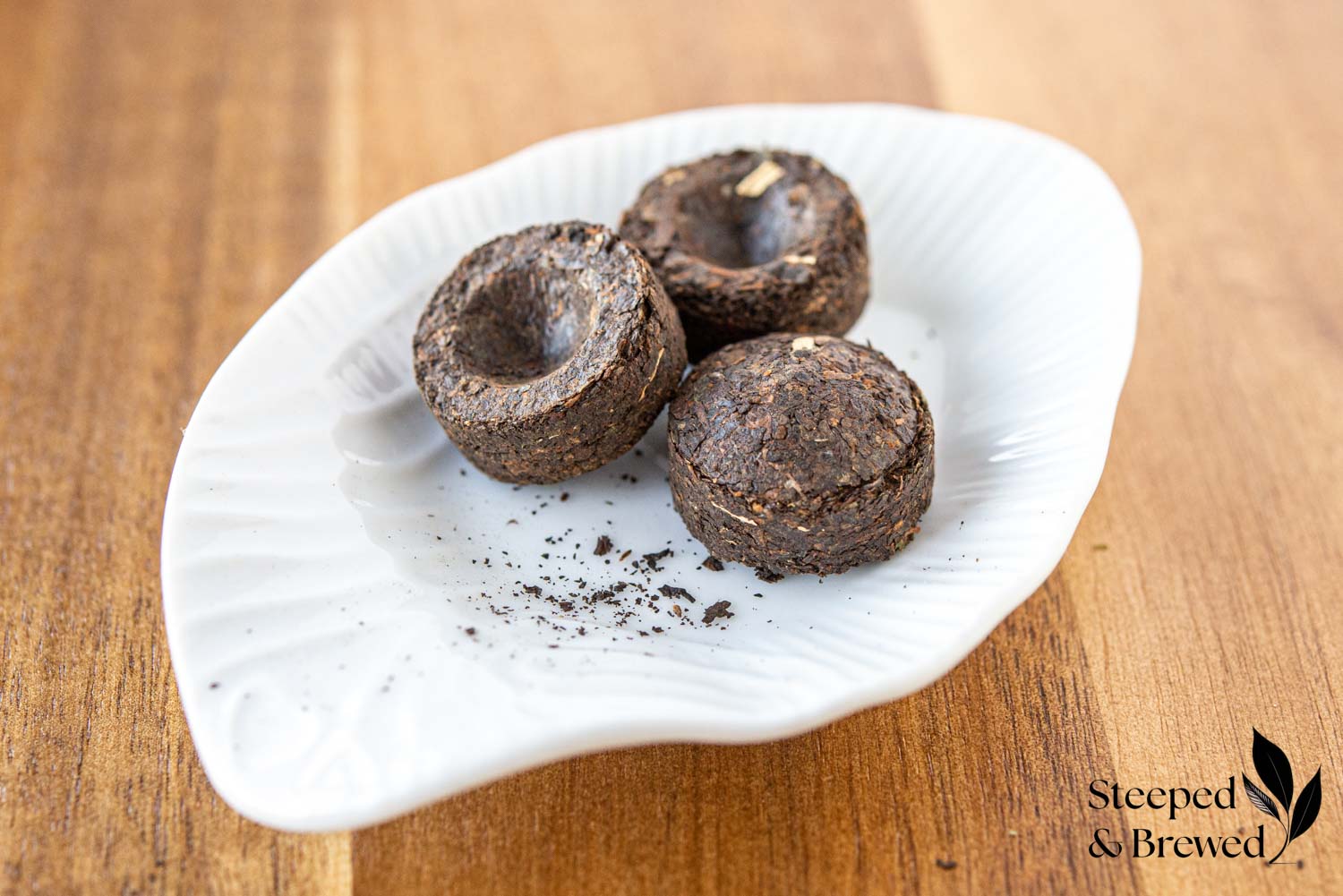
Ready for something a little different? Today we are going beyond the usual earl grey or jasmine green and entering the inky world of pu-erh tea.
Moment of truth – though I’ve been aware of pu-erh for quite some time, my first tasting experience occurred only recently. Given my affinity for both coffee and robust black tea, I assumed black tea was the be-all and end-all for strong, full-bodied brews. I couldn’t have been more mistaken! From the moment I doused a charming bird’s nest-shaped cake of pu-erh in hot water, I was captivated. The aroma was strikingly full-bodied and earthy, the hue as deep as coffee. The flavor was robust, delightfully musty, subtly smoky, a touch rustic, and lingered beautifully on the palate. An unexpected treat, to say the least!
Though I’m a recent convert to the pu-erh tea community, I haven’t hesitated to dive in and absorb all the knowledge I can. I’m eager to share this journey with you as we untangle the intricacies of pu-erh tea, and hopefully inspire you to add this gem to your daily routine.
By the way – are you a hardcore black coffee drinker who thinks tea is too delicate for your taste buds? Well, I have a challenge for you! Give pu-erh tea a try, and I bet you’ll fall in love with its unique flavor. Don’t believe me? Go ahead and taste it yourself. Who knows, you might just become a tea fanatic!
“Tea is the elixir of life.” – Lao Tzu
What is pu-erh tea?
Pu-erh tea is a unique type of fermented, dark tea produced in the Yunnan province of China. It is known for its rich and earthy flavors and its long fermentation process which can last several years or even decades.
Pu-erh undergoes a distinct process – more on that below – which leads to its distinctly bold and complex flavor. In addition to its unique production, what sets pu-erh apart is its age-ability. As it ages, the taste, aroma, and color of this tea evolve due to natural fermentation, just like a good bottle of wine. No two cups of pu-erh are ever truly alike, making it a unique, personal experience.
What is the origin of pu-erh tea?
Pu-erh tea originally comes from Yunnan Province in China. The name comes from Pu’er City, which was a significant hub along the ancient tea-horse road, a network of transportation and commerce routes. Traded for Tibetan horses, the hardened cakes of pu-erh were carried by convoys on perilous journeys over towering mountain ranges, leading to Tibet and other parts of the Chinese Empire.
Today, Yunnan Province continues to be the epicenter of pu-erh tea production, proudly upholding a rich tradition that spans over a millennium. This region stands unparalleled with its unique geology and climate which create the ideal environmental conditions that these tea leaves need to thrive.
What are the two main types of pu-erh tea and what do they taste like?
While there are many varieties and sub-varieties of pu-erh tea, they all fall into two main categories, sheng pu-erh and shou pu-erh.
The general flavor of pu-erh tea is quite complex, often described as robust and earthy, with lingering notes of sweetness. Fresh, young pu-erh can have a distinct woody and vegetal aroma while aged ones uncover deep, rich undertones that evoke hints of dried fruit, tobacco, and damp forest floor.
Sheng pu-erh
Sheng pu-erh, also known as raw pu-erh, is left to age naturally after the leaves are picked and processed, maturing over a number of years and even decades. Like a fine wine meant for aging, as the pu-erh matures, its flavor profile progressively evolves into one that is more complex and refined. The number of years and the conditions under which it is stored can significantly impact its taste. When it is young, expect a Sheng pu-erh to be more astringent, bitter and grassy with notes of fresh green foliage, flowers and fruit. As it ages, these flavors mellow and mature, with drinkers noting rich undertones of forest floor, mushroom, sweet ripe fruits, and even old books or leather. This sounds perfect for enjoying in the library next to a cozy fire!
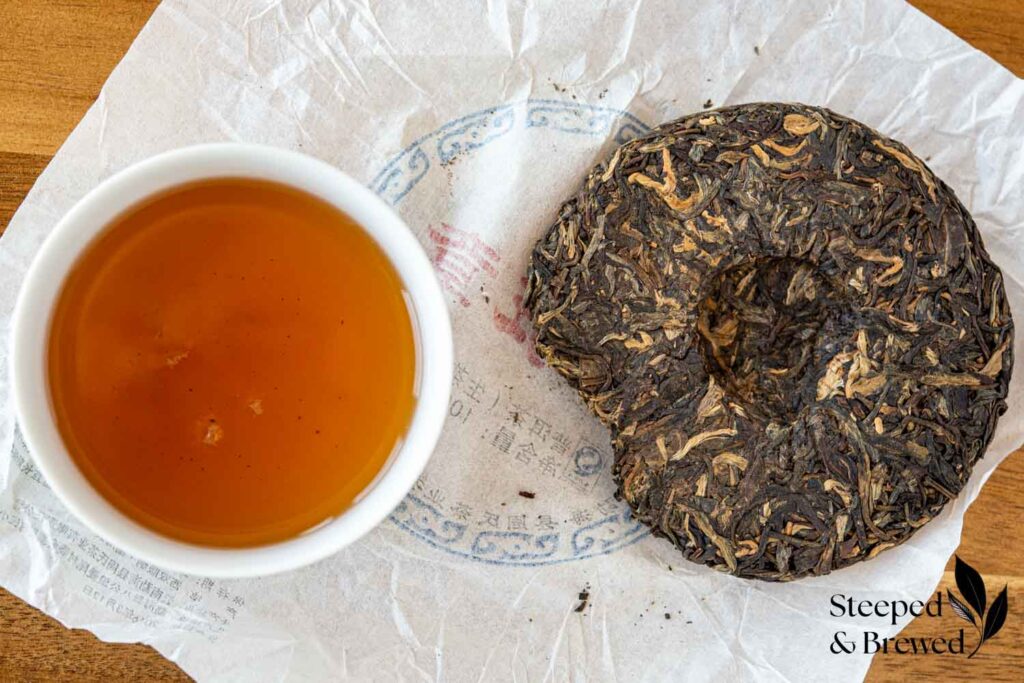
Shou pu-erh
Shou pu-erh, also known as ripe or cooked pu-erh, was developed around the 1970s to meet the increasing demand for pu-erh tea. Unlike Sheng, Shou pu-erh undergoes an accelerated fermentation process that can replicate the taste characteristics of a decades-old raw pu-erh, but with unique and wonderful characteristics of its own. If you’re a fan of bold, rich, earthy, and even barnyardy flavors with notes of damp wood and dark fruits, Shou pu-erh will be your cup of tea (pun intended).
Of course, within these broad categories, the origin, processing methods, and age of the tea leaves can yield a dizzying array of flavors and aromas. Just another reason why the world of pu-erh is so exciting to explore!
Quick sheng and shou pu-erh overview
What is the process of producing pu-erh tea?
Both sheng and shou pu-erh start with similar processing. The freshly picked leaves are withered by gently pan-frying and then rolled to break the cell walls.
The tea leaves then begin a unique fermentation process, which is the magic behind pu-erh’s earthiness, distinct dark color, and rich, robust flavor. Sheng or raw pu-erh, undergoes a natural, slow fermentation over time—sometimes years or even decades. While shou, or cooked pu-erh goes through an accelerated fermentation process where the leaves are piled in a warm and humid environment for about 40 to 60 days to stimulate active microbial fermentation.
What’s up with the pu-erh shapes?
Pu-erh tea is often compressed into a variety of shapes, such as bricks, disks, or bird nests. Traditionally, these shapes made for easy transport of the tea along the ancient trade routes. However, not all pu-erh teas are compressed. Loose leaf pu-erh offers the same rich flavors and aging potential, but without the need for a tea knife to break up the pieces. It’s a matter of personal preference really, whether you enjoy the ritual of prying the leaves from a tea cake or the ease and convenience of loose leaf.
How to brew pu-erh tea
Bringing out the robust, earthy flavors of pu-erh tea is an art in itself and the brewing technique you use can significantly influence the final taste. Don’t worry, though! You don’t need to be a tea master to enjoy a delightful cup of pu-erh. In a future article, we will explore the more traditional Gongfu method for brewing pu-erh. For now, let’s take a look at the more accessible Western style.
This everyday method is my brewing style of choice. The method is simple – 4 grams of tea (about 1 to 1 1/2 teaspoons) for every 8 ounces of boiling water, steeped for 4 to 5 minutes, adjusting the volume of tea and steeping time according to your taste.
Remember, these are not hard and fast rules but more like guiding principles. Brewing tea is as much a personal journey as it is an art. So feel free to experiment and make this method your own!
- Begin by setting your kettle to boil with fresh water. For the best results, aim for a water temperature of around 212°F (100°C), or just off the boil. One exception – if you are brewing a young sheng pu-erh, aim for a cooler water temperature of around 190°F (88°C).
- Preheat your mug or teapot with hot water, then discard the water.
- Measure the tea. If you are using pressed pu-erh, use a small knife or letter opener to break off enough tea leaves. Aim for about 4 grams (about 1 to 1 1/2 teaspoons) of pu-erh tea per 8 ounces of water. Use more for a stronger cup, and less for a weaker cup.
- Add your tea leaves directly to the teapot or use an infuser with plenty of room for the tea leaves to move around and unfurl (skip those little tea ball infusers – they are too small to allow the tea to unfurl and move freely).
- Once the water is ready, pour it over the tea leaves and let the tea steep for 4 to 5 minutes, depending on how robust you like your tea.
- Strain the tea and enjoy!
- When you’ve finished your first cup, you can re-steep, following the same method but adding an additional minute to your steeping time.
Frequently Asked Questions
What is the best way to store pu-erh tea?
Storing pu-erh tea properly is essential to preserve its characteristic taste. Keep it in a cool, dry place away from strong odors and direct sunlight. It’s best to store shapes of pu-erh loosely wrapped in paper. Loose leaf pu-erh is best stored in a dark, airtight container.
Are there any cultural or historical rituals associated with pu-erh tea?
Pu-erh tea is deeply woven into the traditional Chinese culture, where it’s enjoyed in a Gongfu Tea Ceremony – a ritual emphasizing mindfulness, aesthetics, and the tea’s beautiful sensory experience.
Can pu-erh tea be reused or resteeped?
Absolutely! The robust nature of pu-erh lends itself well to multiple infusions. Each steeping will unfurl new layers of flavors, mouthfeel, and aroma, opening up a world of nuances to savor.
Is pu-erh tea always pressed into a shape?
No, not always. Pu-erh is often pressed into various shapes, with the most common being cakes or discs, bricks, and bird’s nests. However, high-quality pu-erh can also be found in loose leaf form.
What are the different spellings of pu-erh?
Pu-erh tea can be spelled differently depending on language and geographical region. Some of the most common spellings include: pu-erh, pu’er, pu-er, and puerh. You might see a variety of these spellings if you’re exploring different tea shops, particularly those specializing in Chinese teas. No matter the spelling, we’re talking about the same wonderfully complex and unique tea.

